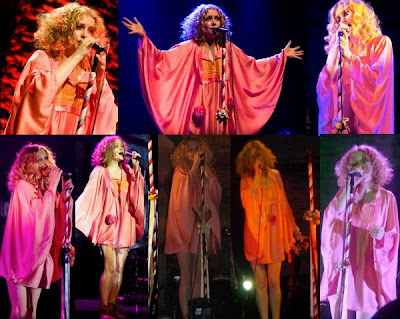
On the surface, she seemed to be the ultimate high society flapper. The only daughter of Sir Bache Cunard, a baronet, and his American wife Maud Alice Burke (known as 'Emerald Lady Cunard' to the world), a doyenne of the London society set, Nancy Cunard (1896-1965) lived a life of privilege from an early age. She was heiress to the extremely wealthy Cunard transatlantic steamship company, founded by her grandfather. During the 1920s, Cunard came to symbolize the "new woman" of the decade. She was sensational - a gorgeous sight in exotic clothing, she had everyone hanging on her every word. William Carlos Williams called her "one of the major phenomena of history" and kept a photograph of her in his study. As a little girl, she "wanted to run away and be a vagabond," as she told family friend George Moore. Despite her upper class upbringing, Nancy rejected the ideals set forth by her family, instead choosing to live most of her life as an activist to issues such as fascism and racism.
In 1910, after her parents separated, she moved with her mother to London. Her adolescence was checkered with times spent in Germany and France in boarding school, other times her mother was content to have her at home. During World War I, Nancy developed a relationship with Peter Broughton Adderley, a soldier who was killed in action only weeks before Armistice Day while in France. Within the year, a young Nancy was wed to Sydney Fairbairn, a veteran of the war and prized cricketeer. The marriage lasted less than two years, many allege it was because of Cunard's lasting grief over Adderley's death. It was during this time that she was associated with the influential group The Coterie (an Algonquin Table of sorts for the UK).
After her marriage ended, Nancy moved to Paris at the age of 24. It was in Paris that she became involved with the modernist, surrealist, and dadaist movements, publishing most of her poetry during her time there. She published three volumes of poetry: Outlaw (1921), Sublunary (1923), and Parallax (1925), the latter published by Leonard and Virginia Woolf. She had a brief affair with Aldous Huxley, which would later prove inspiration for several of his novels, including Antic Hay and Point Counter Point, before starting a two-year relationship with Louis Aragon.
In a swirling mix of friends and lovers, Cunard was muse and mentor to some of the most celebrated and distinguished of artists - from writers including Ernest Hemingway, James Joyce, Langston Hughes (who called her "one of my favorite folks in the world"), William Carlos Williams, Wyndham Lewis, Ezra Pound, Louis Aragon, Aldous Huxley, Pablo Neruda Henry Crowder, Mina Loy and Tristan Tzara. She posed for Man Ray, Cecil Beaton, Constatin Brancusi, Alvaro Guevara, and Ambrose McEvoy. Cunard was also the inspiration for the character Diana Merrick, played by Greta Garbo, in the film A Woman of Affairs, based on the play The Green Hat. She was beautiful - a rail thin beauty swathed in expensive threads, and made up with smoky make up.
In the late 1920s, Nancy moved to Normandy, setting up the Hours Press in 1928 for young experimental writers. That same year she began a relationship with African American jazz musician Henry Crowder, who then was living in Paris. As a result of the relationship, Cunard became involved with politics, developing a passion for civil rights, even living in Harlem for a time - much to the horror of her mother (her mother was quoted as saying, "Is it true that my daughter knows a Negro?") She wrote Black Man and White Ladyship in 1931 and edited the anthology Negro, which contained early works from Zora Neale Hurston, WeB DuBois, and Langston Hughes.
Her appreciation for the African American community and culture translated over into her widely imitated style. Her arms were always festooned with African bangles, worn layered on top of each other up to both her elbows. She had a love of exotic prints, and wrapped turbans around her fashionably cropped hair. She kept her lips and nails painted in a deep vermillion red at all times.
During the years leading up to the Second World War, Nancy became deeply involved with fascist causes, frequently using the Hours Press to print pamphlets of war poetry. In WWII, she worked for the French Resistance as a translator. Of her political involvements, Cunard said "I've always had the feeling that everyone alive can do something that is worthwhile." After the war, Cunard left Normandy to travel the world. Her later years were plagued by mental illness, untreated throughout her life and aggravated by her severe alcoholism and self-destructive nature, causing her health to rapidly deteriorate. She was severely impoverished, and passed away in a Paris hospital in 1965 after being found on the street, only weighing 26 kilos (less than 60 pounds).






























































